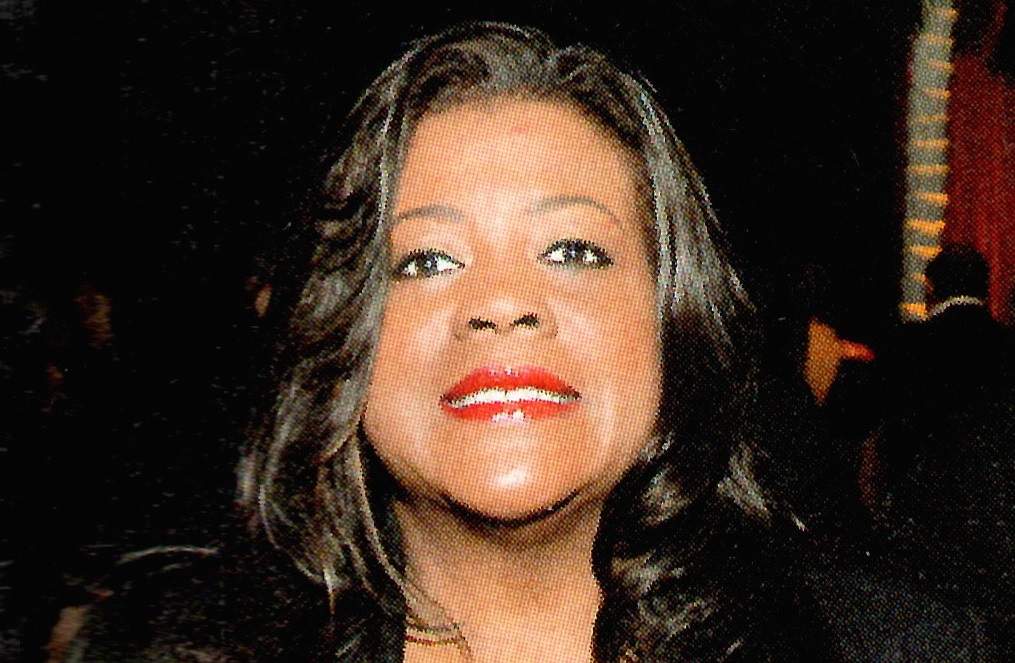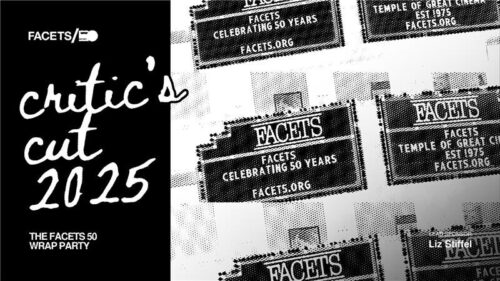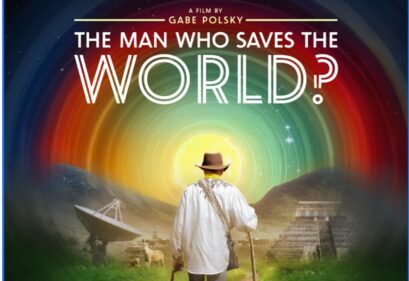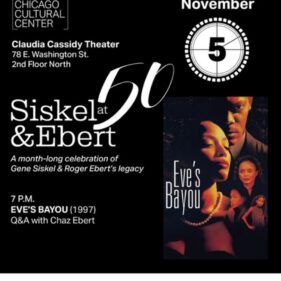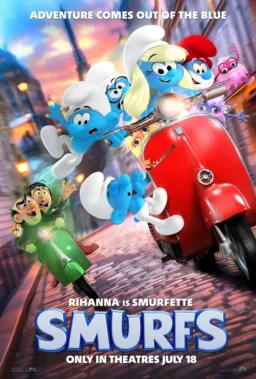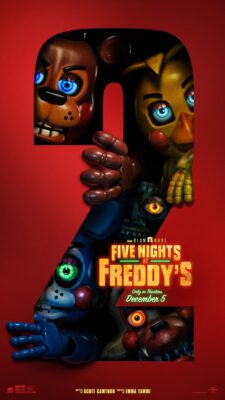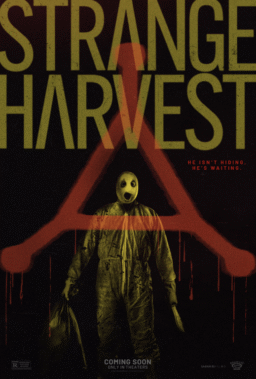I was delighted to attend the event at the Music Box in Chicago this week promoting the new book, Black Caesars and Foxy Cleopatras: A History of Blaxploitation Cinema, by our former Film Critic Odie Henderson, who is now the head critic at The Boston Globe. Odie is one of the people who never fails to make me laugh out loud at his humor, and the crowd joined me in laughter as he held forth onstage for a Q&A with Brian Tallerico, the Managing Editor of RogerEbert.com, after the screening of the film “Super Fly.” At his book signing I bought a book for myself, but I also bought several others to give away as gifts. If his book is even half as well-written as his verbal humor, it will be a gift many will be happy to receive. And in true Odie fashion, he signed my book to the “The Baddest One-Chick Hit Squad in Town!”
It was thrilling to see so many of our film contributors in attendance. But one I was particularly happy to greet was our Far Flung Correspondent, Michał Oleszczyk. Michał has represented RogerEbert.com in Cannes, but I had not seen him for a few years, and so his professorial visage complete with a beard and the confident mien of a learned man made me interested to learn more about his current life. I was proud to discover that he is in Chicago as a visiting Fulbright Scholar. As such, he is teaching Polish film at the Polish, Russian and Lithuanian Studies at the University of Illinois at Chicago.
Michał is based in Poland, where he was named the Critic of the Year by the Polish Film Institute in 2012. He wrote the first Polish book on the films of Terence Davies and has published a translation of J. Hoberman and Jonathan Rosenbaum’s “Midnight Movies.” After having defended a Ph.D. thesis on the work of Pauline Kael, he has taught film at Polish universities. And he works in the Polish film industry as a script consultant and screenwriter.
A film he co-wrote, “All Our Fears,” can be seen on Amazon Prime. It tells a story inspired by the life and art of an openly gay Polish artist, Daniel Rycharski, whose work was covered in The New York Times.
To welcome him to our city, I have put together a compilation of some of his work that has been published on our site over the years. Click on each bolded title, and you will be directed to the full article. Welcome to Chicago, Michał!
I. FILM REVIEWS

What makes the movie work is the consistent, comical self-pity of Marius, who at one point even professes mad love for Otilia and says they should get back together again. It’s a great moment for the actress Mihaela Sirbu, who manages to convey that tiny glimmer of amusement still dancing inside her, letting us know that Marius and Otilia were probably a great couple long ago. In this moment, the film plays almost like a kitchen-sink version of “His Girl Friday,” with madcap Marius trying to save Otilia from a lifetime of boredom with Aurel the fuddy-duddy. He even quotes poetry to her and her expression makes it clear that no one has done it in a long, long time.

The film introduces a dozen or so characters and shifts the narrative between them in an effortless, natural way that gives us a good idea of the group dynamics, as well as some individual backstories. Even though the whole of “The We and the I” is set inside the bus, Gondry peppers the film with innovative flashbacks, shot on low-def video and serving as visual footnotes: some real, some imaginary. The whole movie feels like a breeze and has the lively rhythm of the kids’ talk, which sounds totally authentic and was actually improvised in a workshop Gondry ran with his actors prior to the shooting.

“Stranger by the Lake” is the sexiest and most elegant thriller in years, and it’s a damn shame it stands so little chance of traveling beyond the niche of a “gay film” it will probably get squeezed into. This French movie, written and directed by Alain Guiraudie, is set in a single location and has a dreamy quality to it: a mixture of allure and menace that’s quite intoxicating. We never leave a sunny gay cruising area the characters are frequenting—a lake, a beach, a nearby boudoir of bushes—but our imagination is kept alert at all times: every image and every cut is underlined with tension.

Far from a standard-issue indie in its basic premise, Harrill’s first outing as a writer/director is very mature in its treatment of a subject from which movies often shy away: the awakening of a religious impulse in a secular, educated adult. Unlike such recruiting posters as the recent “Heaven is For Real” or the 1943 chestnut “The Song of Bernadette”, “Something, Anything” is close in spirit to Fred Zinnemann’s great 1959 “The Nun’s Story”, in which a particular woman’s religious vocation was treated with all the attentiveness and respect one would hope for when dealing with anyone’s sense of purpose in life.
II. INTERVIEWS

Love & Money with James Toback
Since I’m 68 now, I don’t have an overwhelming sense of anything beginning. To me, everything seemed part of youth until I was about 50. At that time, it occurred to me I wasn’t going to live forever. As a result, I don’t give a fuck. I don’t think of the future in terms of long-distance planning, but only in terms of the next move. I don’t want to live too long; I feel there’s a limit I wouldn’t like to cross. Let me put it this way: There’s not an 85-year-old man on this planet that I would like to be.

Coming to America: A Conversation with James Gray
The whole idea was to show something that makes Ewa realize that transcendence exists. It was very important to me. If all you have is bleakness upon bleakness, there’s no point in watching. In “Survival in Auschwitz,” Primo Levi says that even in Auschwitz there were moments when he felt joy. I don’t even understand that, at least not emotionally. I can, sort of, understand it intellectually and that’s part of what I was trying to do here. Also, maybe you could see the strings enabling Jeremy to levitate if you weren’t in the state of mind Ewa is at that point in the story. She needs this magic to survive.

I really like to work with intelligent actors who understand what the characters are going through in the scene and why they say the things they say. This is how it becomes organic. In “One Floor Below”, the main character runs into the guy he suspects is a murderer, and they have a long conversation about registering a car – but that’s not what they really talk about. I gave the actors specific instructions on what the characters are thinking at any given moment, so it’s really a step by step process of creating a moment. I think that big battles in life happen exactly like this: they are not frontal in nature, they happen between the lines.

No Safety Net: Eugenia Yuan on “Revenge of the Green Dragons”
In a way, actors are just like immigrants: plunging into something new and scary in order to emerge as different human beings. On the other hand, changing doesn’t mean that you stop being yourself. There’s an anchor somewhere deep down that keeps you and makes you into who you are. You don’t even realize it’s there, and it’s usually when you hit your lowest point that you discover what that anchor truly is. It’s sad that it takes so much, but I think that your lowest point can also be the point at which you become strongest.

Serenity Now: Paul Harrill on Light from Light
I think our obsession with work and multi-tasking make introspection and spiritual work very challenging. But, in terms of the difficulty in discussing it, I also think it’s fear of embarrassment. We live in times in which more of us are seeking than are willing to admit. We don’t want to talk about it. It’s scary to talk about it, because when we are seeking we don’t have answers, we don’t understand what’s happening in our lives. I tried to represent that process in my two movies. The meaningful moments that happen between people in the films occur when they allow themselves to be vulnerable and honest about their own experience, their questions, their searching. It’s very hard to do, but it’s something we should strive to do.

Rob Garver on What She Said: The Art of Pauline Kael
The thing about Pauline is her writing is so consistently good that it’s hard to pick one. One of my favorite pieces is definitely The Come-Dressed-as-the-Sick-Soul-of-Europe Parties, where she criticizes three arthouse films [Michelangelo Antonioni’s “La Notte,” Federico Fellini’s “La Dolce Vita” and Alain Resnais’ “Last Year at Marienbad”] as being about not much more than the “bored rich.” This is just pure Pauline—so much fun to read, even if you like those movies (which I am not huge fan of). Camille Paglia says in my film that Pauline was attacking exactly what Paglia loved about those movies. And Paglia loved her for it. There’s a kind of magic in pieces like this.
III. ESSAYS

At night, the ski slopes of Park City, Utah, are lit so beautifully they look like screens awaiting a projection from the sky. A moviegoer attending Sundance Film Festival couldn’t wish for a better backdrop for a long trek home after the final movie of the day is over. Even if the film happened to be lousy, those huge mid-air patches of white seem to hint that the good stuff is yet to come.

Costing No Less Than Heaven: Terence Davies’ “The Long Day Closes”
For on the most basic—not to say shallow—level, “The Long Day Closes” is yet another “love letter to the movies”; a séance of sorts at which Davies is summoning the ghosts of films past and offers an immersion into his own childhood love affair with the moving image. Seeing the film this way (as a kind of Liverpudlian riff on Giuseppe Tornatore’s “Cinema Paradiso“) is at once justified and completely wrong. The movie does contain images conveying its main character’s utter delight at movie watching, and one of them—that of Bud leaning against the balcony of a movie theater, with the projection beam shooting from behind his back and framing his face with a halo—even became Museum of Modern Art’s still of choice, used to advertise movie screenings offered in its program.

The way the whole thing works is this. I play the movies with the hard of hearing English subtitles on. I both listen to the dialogue and see it displayed, so that I can process the lines instantaneously. The joy of the task comes basically from having to act out the movie’s script—cusswords, witticisms and all. I uttered many lines while translating that I would not dare weave into a regular conversation with my mom (still, I usually censor crude sexual humor). When the dialogue is especially impassioned, I find myself completely identifying with the character speaking it, and so I will never forget the experience of translating “A Raisin in the Sun”, when the Sidney Poitier character’s frustration hit me with more force than ever before—for the very reason I had to deliver his angry, anguished monologue of complete powerlessness myself.

Life Unspooled: On Watching “Life Itself” in the Middle of Polish Winter
Among a myriad things “Life Itself” does (and it has to be said the movie works remarkably well on multiple levels, not least as a love story between Roger and Chaz and the love/hate story between him and Gene Siskel), it reveals just how open Roger was to new people and new ideas. It’s no coincidence that he was the first one to embrace both TV and the internet as natural environments for film criticism—he didn’t see any reason for the field to shut itself off from the widest possible audience. It may well be that Roger’s greatest passion was for human contact: for sharing, giving and engaging with others (as his famous Movie Answer Man interactions always testified to.) Unlike some other great movie critics, he genuinely gave you the impression of a regular guy turning to you from his seat and striking up a conversation about the movie you just saw: “So, what did you think…?”. His revolutionary approach made it possible for the seats to be located on the opposite ends of the world—without making the conversation any less real and heartfelt.

Finding the Meaning of Tenet: On Watching the First COVID-19 Era Blockbuster
For a film that opens with a deft visual metaphor of democracy in crisis (the Kiev opera audience, drugged into a coma, sits passively as international spies and thugs duke it out in plain view, all looking alike), “Tenet” is a highly individualistic work. Whether “Tenet” has anything to say about humans as a community, though, I seriously doubt. There is no class diversity in the film. It takes place wall-to-wall in a world where a Brooks Brothers suit literally means dressing down. For all the Cold War mumbo-jumbo and references to atomic destruction, the film is almost quaint in averting its eyes from actual tensions that tear apart our present world. Not that this comes as a surprise. With this film, Nolan confirms himself as the ultimate technocratic classicist: a David Lean of mind-game sci-fi films, aristocratically weaving the world’s impending doom into a tantalizing, high-priced brainiac pretzel.
Click here to find all of Michał’s work published at RogerEbert.com.
